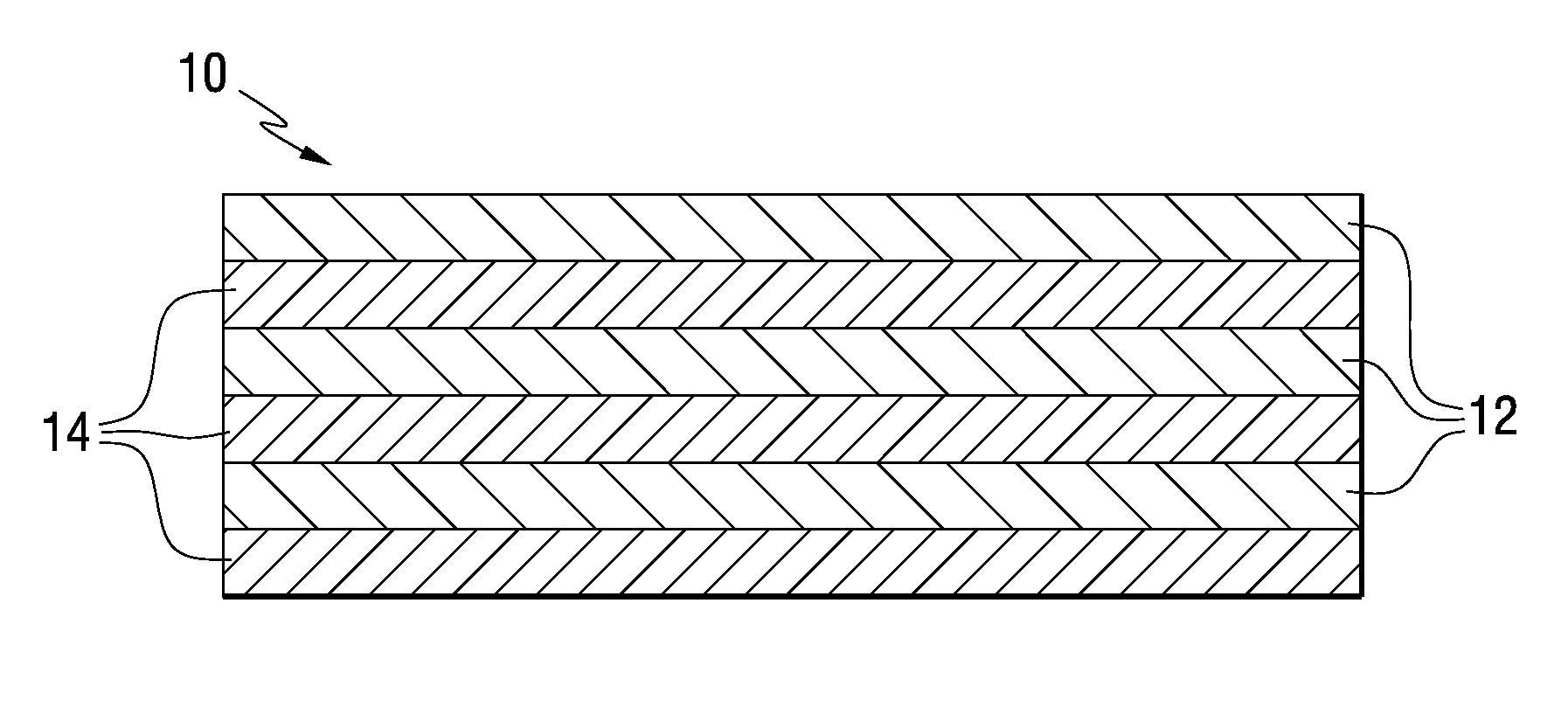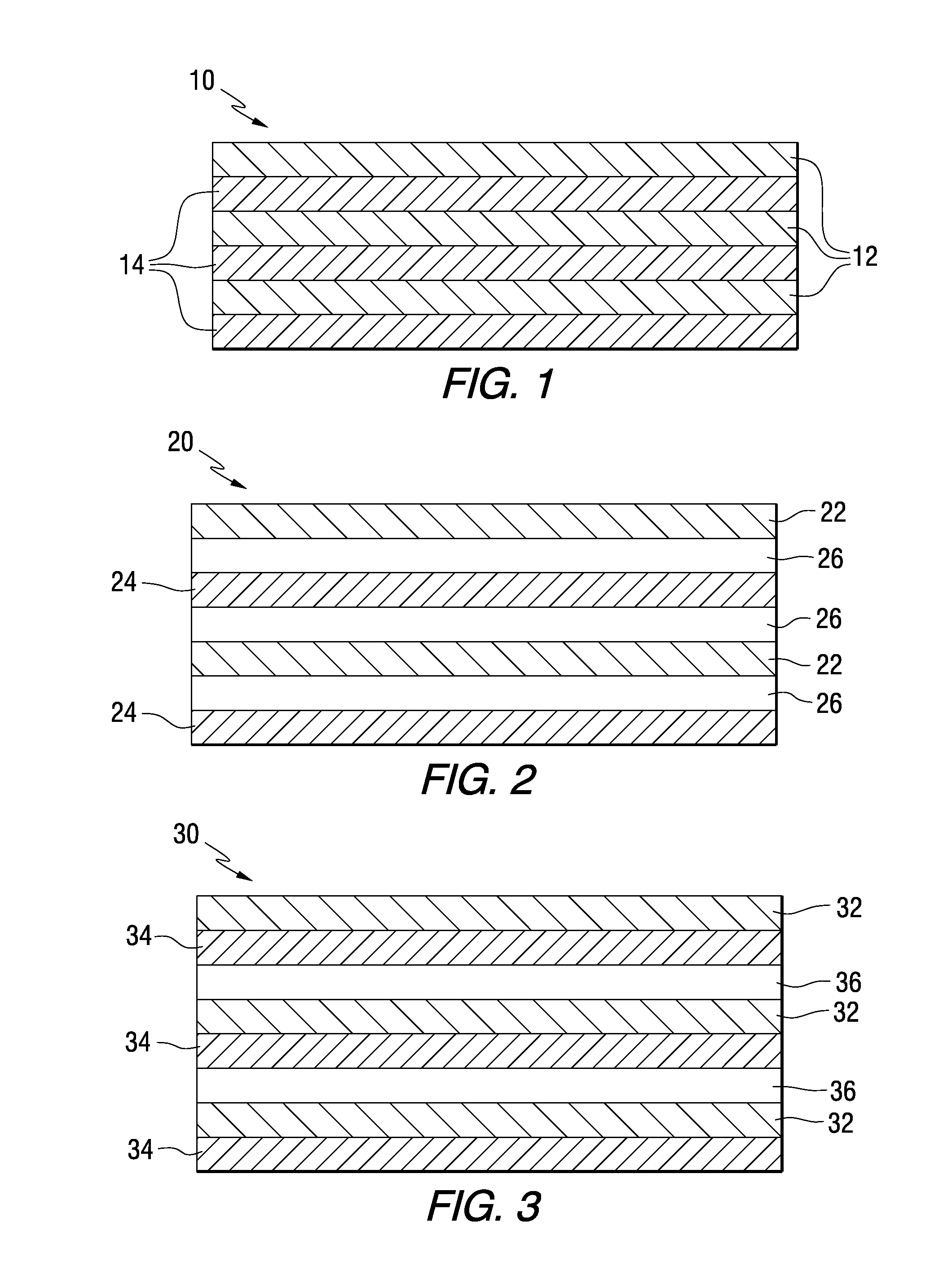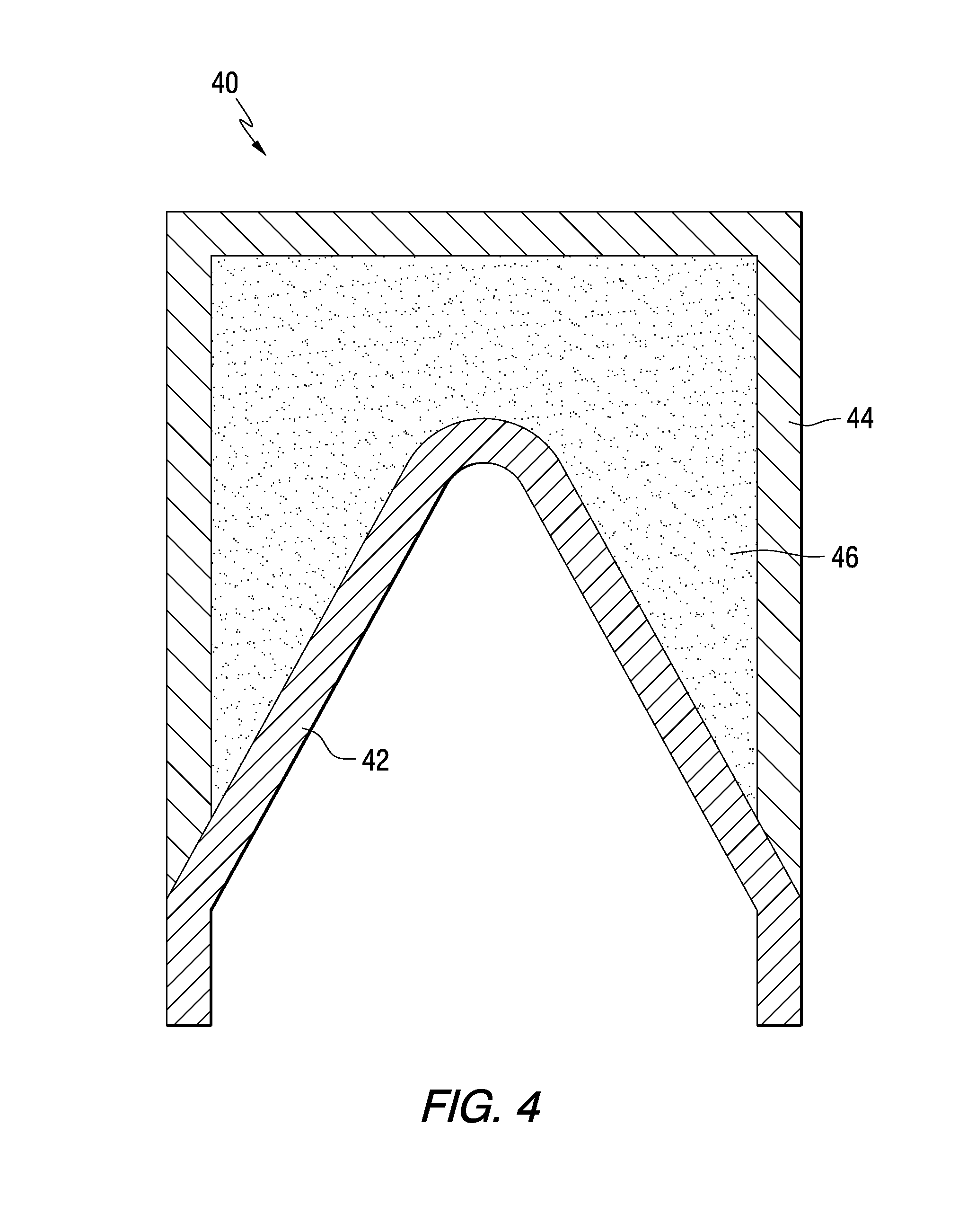Shock initiation devices including reactive multilayer structures
a multi-layer structure and shock initiation technology, applied in the field of shock initiation devices, can solve the problems of low density, low radial dispersion of thermal energy of conventional reactive intermetallic materials, and high rejection rate of forged liner products
- Summary
- Abstract
- Description
- Claims
- Application Information
AI Technical Summary
Benefits of technology
Problems solved by technology
Method used
Image
Examples
example 1
[0031]Samples comprising Ni / Al multilayers on copper cones were made. The multilayers were applied using a Magnetron sputtering process. This process is done in a vacuum chamber (<10-5 Torr) using sputter guns, plasma formation and large electrical potentials to dislodge atoms from a target material and deposit them on the substrate. The process occurs on the atomic level and deposition rates are influenced by factors such as applied voltage, distance from sputter target, substrate orientation, vacuum, etc. For this series of tests, alloys AA-1100 (99% Al) and Inconel 625 (61 Ni-22 Cr-2.5 Fe-9 Mo) were used as target materials.
[0032]Al / Ni coatings were formed on conical copper liners, and monolithic Al / Ni cones were formed on a mandrel and removed. However, as the coating trials progressed, it became evident that slow sputtering rates were associated with the latter. The time required to the requisite 0.048-inch thickness would have been long. Therefore, the efforts focused on coati...
example 2
[0037]Two alloy systems were selected: nickel-aluminum and tantalum-aluminum. Two-inch cathodes (one of Ni and one of Al) are positioned in opposite directions, at a 2 inch distance from the substrate holder (drum), which rotates at an adjustable speed. The substrates to be deposited on are positioned on the rotating drum, and moved past each target sequentially. This allows deposition of the desired number of bi-layers, and desired total foil thickness, as determined by rotation speed, selected deposition rate, and total run time.
[0038]To establish predictable deposition rates for the materials, deposition onto precision gage blocks was made. This was done with one segment covered, that when removed after deposition left a sharp “step” from the gage block surface to the top of the deposited material. This was measured using a high sensitivity lever gage indicator with submicron resolution. Gage blocks were held on the substrate holder at a distance of 3 inches from source to substr...
example 3
[0065]Repeating equal layers of aluminum and Inconel were deposited onto copper foil substrates that were approximately 6″ tall×10″ wide×25 mils thick. A grid was established on the copper sheet using high-temperature, vacuum-compatible tape (Kapton tape / silicone adhesive) to create rectangles of multi-layer foil approximately 1″×2″ in size for the initiation testing. After processing, reactive foils with even alternating layers resulted in 17 mm thick foils for initiation testing. Very thin 100 micron thick Inconel / Al exothermic multilayer foils fabricated using the magnetron sputter deposition process achieved tensile strengths of 300 Mpa.
[0066]Differential scanning calorimetry was performed on freestanding multi-layer material (material removed from substrate prior to DSC run). This analysis measured heat flow as a function of scan temperature of several milligrams of each of the multi-layer sample materials. Specimens were subjected to a heating cycle that ramped from ambient te...
PUM
| Property | Measurement | Unit |
|---|---|---|
| thickness | aaaaa | aaaaa |
| tensile yield strength | aaaaa | aaaaa |
| temperatures | aaaaa | aaaaa |
Abstract
Description
Claims
Application Information
 Login to View More
Login to View More - R&D
- Intellectual Property
- Life Sciences
- Materials
- Tech Scout
- Unparalleled Data Quality
- Higher Quality Content
- 60% Fewer Hallucinations
Browse by: Latest US Patents, China's latest patents, Technical Efficacy Thesaurus, Application Domain, Technology Topic, Popular Technical Reports.
© 2025 PatSnap. All rights reserved.Legal|Privacy policy|Modern Slavery Act Transparency Statement|Sitemap|About US| Contact US: help@patsnap.com



